Cataclysm Classic Restoration Druid PvE Guide
Welcome to our Cataclysm Classic Restoration Druid PvE guide. This article is a comprehensive resource that includes a wealth of information on various tips and tricks that will aid you in becoming a skilled and efficient Druid player.
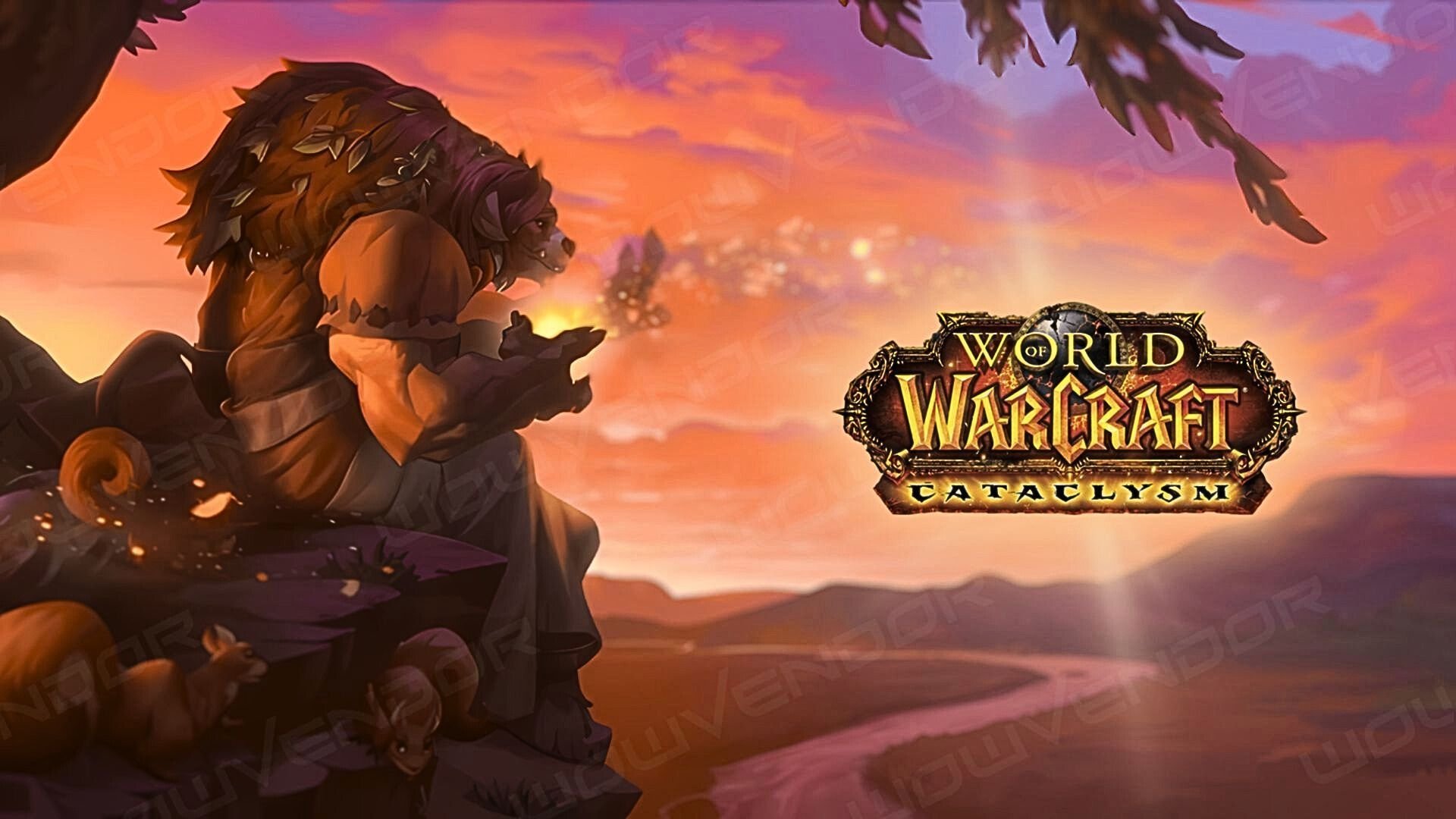
Table of Contents
- Cataclysm Classic Restoration Druid PvE Guide: Talents
- Cataclysm Classic Restoration Druid PvE Guide: Glyphs
- Cataclysm Classic Restoration Druid PvE Guide: Races
- Cataclysm Classic Restoration Druid PvE Guide: Gear
- Cataclysm Classic Restoration Druid PvE Guide: Casting Mechanics
- Cataclysm Classic Restoration Druid PvE Guide: Our Spells
- Cataclysm Classic Restoration Druid PvE Guide: User Interface
- Conclusion
Additionally, this guide summarizes well-known points of Resto play, and serves as a starting point for discussion of healing in Cataclysm Classic.
Cataclysm Classic Restoration Druid PvE Guide: Talents
Most raiding specs will take all 40 of these talent points:
- Natural Shapeshifter: Reduces the mana cost of all shapeshifting by 10% and increases the duration of Tree of Life Form by 3 sec.
- Naturalist: Reduces the cast time of your Healing Touch and Nourish spells by 0.50 sec.
- Heart of the Wild: Increases your Intellect by 2%. In addition, while in Bear Form your Stamina is increased by 2% and while in Cat Form your attack power is increased by 3%.
- Master Shapeshifter: Grants an effect which lasts while the Druid is within the respective shapeshift form. Bear Form – Increases physical damage by 4%. Cat Form – Increases critical strike chance by 4%. Moonkin Form – Increases spell damage by 4%. Tree of Life/Caster Form – Increases healing by 4%.
- Perseverance: Reduces all spell damage taken by 2%.
- Improved Rejuvenation: Increases the effect of your Rejuvenation and Swiftmend spells by 5%.
- Revitalize: When you periodically heal with your Rejuvenation or Lifebloom spells, you have a 20% chance to instantly regenerate 1% of your total mana. This effect cannot occur more than once every 12 sec. In addition, you also grant Replenishment when you cast or refresh Lifebloom. Replenishment – Grants up to 10 party or raid members mana regeneration equal to 1% of their maximum mana per 10 sec. Lasts for 15 sec.
- Nature’s Swiftness: When activated, your next Nature spell with a base casting time less than 10 sec. becomes an instant cast spell.
- Empowered Touch: Increases the direct healing done by your Healing Touch, Regrowth and Nourish spells by 5%, and grants those spells a 50% chance to refresh the duration of your Lifebloom on targets.
- Malfurion’s Gift: Whenever you heal with your Lifebloom spell, you have a 2% chance to cause Omen of Clarity. In addition, the cooldown of your Tranquility is reduced by 2.5 minutes.
- Efflorescence: Your Swiftmend spell causes healing flora to sprout beneath the target, restoring health equal to 4% of the amount healed by your Swiftmend to the three most injured targets within 8 yards, every 1 sec for 7 sec.
- Wild Growth: Heals up to 5 friendly party or raid members within 30 yards of the target for 0 over 7 sec. Prioritizes healing most injured party members. The amount healed is applied quickly at first, and slows down as the Wild Growth reaches its full duration.
- Gift of the Earthmother: Increases the healing done when your Lifebloom expires by 5%, and causes your Rejuvenation spell to also instantly heal for 5% of the total periodic effect.
- Swift Rejuvenation: Reduces the global cooldown of your Rejuvenation by 0.5 sec.
- Tree of Life: Shapeshift into the tree of life, increasing healing done by 15% and increasing your armor by 15%. Also protects the caster from Polymorph effects. In addition, some of your spells are temporarily enhanced while shapeshifted. Lasts 25 sec. Enhanced spells: Lifebloom, Wild Growth, Regrowth, Entangling Roots, Wrath
- Nature’s Grace: You gain 15% spell haste after you cast Moonfire, Regrowth, or Insect Swarm, lasting 15 sec. This effect has a 1 minute cooldown. When you gain Lunar or Solar Eclipse, the cooldown of Nature’s Grace is instantly reset.
- Nature’s Majesty: Increases the critical strike chance with spells by 2%.
- Moonglow: Reduces the mana cost of your damage and healing spells by 9%.
- Furor: Grants you a 66% chance to gain 10 Rage when you shapeshift into Bear Form, allows you to keep up to 66 of your Energy when you shapeshift into Cat Form, and increases your maximum mana by 10%.
- Genesis: Increases the healing done by your periodic spells and by Swiftmend by 4%, and increases the duration of your Moonfire and Insect Swarm by 4 sec.
That leaves one point which you can fill pretty much anywhere you like in the Resto tree.
There are few adjustments you might consider making:
- Nature’s Cure: you can put the final free point here, but if you mainly do 25-mans, very few encounters have magic dispel requirements. It could be something to ask your healing team about.
- Living Seed: This is no longer required for Efflorescence, and still a very weak talent. You may want it if you’re doing some significant tank healing.
- Nature’s Bounty: Similarly, this generally a weak talent, but you may want it if you’re using Regrowth heavily. The new Nourish effect is not that impressive. For either Living Seed or Nature’s Bounty, you’d probably have to move points out of Perseverance.
- Furor vs. Genesis: On paper, the extra mana tends to look a bit stronger, but if you often find yourself finishing encounters with mana to spare, you might get more value out of Genesis.
Talent details
A few more mathematical facts I just want to keep here for the people who are interested:
- The following all stack additively: Gift of Nature, Improved Rejuvenation, Blessing of the Grove, Genesis, Empowered Touch, Glyph of Rejuvenation, and Harmony. Tree of Life and Master Shapeshifter stack multiplicatively.
- Omen of Clarity: Does not proc from healing spells (Clearcasting can only be procced by Malfurion’s Gift). Among healing spells, Clearcasting is only consumed by Healing Touch and Regrowth. A proc once again lasts 15 seconds.
- Efflorescence: Because it’s based of the size of the underlying Swiftmend, it double-dips from some buffs, like Master Shapeshifter, Tree of Life, and Harmony. It benefits from crit because Swiftmend does, but the individual ticks do not crit.
- Wild Growth: The base heal decays with each tick, but all extra healing from spellpower is equal across the ticks.
- Moonglow: Mana cost is rounded down after multiplying. Applies after Shard of Woe-type effects.
- Mark of the Wild: does not stack with Blessing of Kings.
Cataclysm Classic Restoration Druid PvE Guide: Glyphs
Prime Glyphs
Use Glyph of Rejuvenation, Glyph of Lifebloom, Glyph of Swiftmend. These are easy choices because the only other healing option is Glyph of Regrowth, which by all accounts looks rather pointless.
Major Glyphs
Very weak selection here. Glyph of Rebirth is the only obvious choice. You’ll probably use Glyph of Healing Touch, which can occasionally be of some benefit, because there’s no reason not to.
The only important choice is whether to use. Glyph of Wild Growth in heavy-healing situations, the Glyph slightly increases your throughput by freeing up GCD’s for other spells. So in 25-man’s where the 6th target is likely to be effective, and you’re using Glyph of Rejuvenation a lot in between, it should be helpful. But in a 10-man where the 6th target might be unnecessary (not always true, use your judgment here), or in a situation where constant WG uptime is more important than saving the occasional GCD, don’t use the Glyph. All in all the decision requires some understanding of the fight you’re going to be healing.
Minor Glyphs
Glyph of the Wild can save a bit of mana if you have to rebuff people during a fight, but Mark is a very cheap spell now. Other than that, no Glyphs affect our combat mechanics. Glyph of Unburdened Rebirth can prevent you from being embarrassed with no reagents, and saves an inventory slot to boot. Glyph of Dash might occasionally be of some use. So, fortunately, you should have no trouble making room for the all-important Glyph of the Treant.
Cataclysm Classic Restoration Druid PvE Guide: Races
Horde
- Troll is best, since it gives Berserking.
- Tauren gives no healing benefit.
Alliance
- Worgen is best, since it gives 1% crit (Darkflight is also a nice perk).
- Night Elf gives no healing benefit.
Cataclysm Classic Restoration Druid PvE Guide: Gear
Stats
In roughly descending order of importance.
Intellect:
Intellect provides 1 spellpower and 0.00154% to crit per point. With Mark of the Wild, Heart of the Wild, and Astral Leather Specialization, it provides 1.169 spellpower and 0.0018% crit (555 points per 1% crit, a bit under 1/3 of a crit rating).
Similarly, with these talents, one point of Intellect increases your maximum mana by 17.53 (19.28 with 2/3 Furor), and your regen from Replenishment, Revitalize, and Innervate correspondingly.
These things together make Int the best stat for both HPS and mana.
Spellpower:
Intellect, without the talent bonuses, crit bonus, or mana gains. Basically a weaker form of Intellect that only appears on weapons and trinkets, but is still good.
Mastery rating:
143.42 mastery rating adds 1% to our Harmony bonus. This is essentially a flat bonus to all healing (albeit an additive bonus, so slightly weaker than it looks). Aside from haste breakpoints, mastery is the secondary stat giving the best throughput increase.
Haste rating:
128.05 haste rating gives 1% spell haste. This reduces the cast time and GCD of all of our spells, to a minimum of 1 second GCD (there is no effect on Rejuvenation, which automatically has a 1 second GCD from talents). It also causes our HoT’s to tick faster and potentially gain extra ticks (see below for more on breakpoints). Aside from a few very significant breakpoints, haste is a weaker secondary stat since it doesn’t improve Rejuvenation at all, and increases mana consumption.
Critical strike rating:
179.28 crit rating gives 1% to crit. Now that crit heals do twice the healing of non-crit heals (2.06 with a Revitalizing meta).
Spirit:
Improves your innate mana regen. Specifically, one point of Spirit gives 0.00836*SQRT(Int) MP5. Spirit generally gives around as much MP5 as Int, but gives no mana pool increase and no throughput gain at all.
Haste Breakpoints
As noted above, much of the value of haste lies in its ability to add extra HoT ticks at certain specific values. TreeCalcs can compute all your haste breaks based on your current buffs and talents, but here are some of the most important ones that tend to be useful to know while gearing your character:
Unless otherwise noted, entries in this list assume a 5% haste buff from a Moonkin, Shadow Priest, or Shaman totem.
- 916: 5th tick of Rejuvenation. You should have this in any raid gearset.
- 1573: 9th tick of Wild Growth and Efflorescence with Dark Intent. If you have DI, you only have to make it to here instead of 2005 to get this nice bonus.
- 1602: 5th tick of Rejuvenation without 5% haste. If you’re missing the haste buff, you really want to be at this point or higher.
- 1779: 6th tick of Rejuvenation with Nature’s Grace.
- 2005: 9th tick of Wild Growth and Efflorescence. This point is very valuable, as these two spells make up a large portion of our healing.
- 2032: 6th tick of Rejuvenation with Shard of Woe proc active. If you have a Shard, this is only a small leap from 2005 and makes your trinket use much more effective.
- 2490: 7th tick of Rejuvenation with Nature’s Grace and Shard of Woe active.
- 3106: 11th tick of Wild Growth/Efflorescence with Nature’s Grace.
- 3478: 6th tick of Rejuvenation with Dark Intent.
- 3754: 10th tick of Wild Growth/Efflorescence.
- 3967: 6th tick of Rejuvenation.
Stat Priority and Reforging
Generally, Intellect is far better than all secondary stats. You will almost always favor gemming and enchanting Intellect (see below).
Healer epics have Intellect, Stamina, spellpower in the case of weapons, and 2 out of the 4 secondary stats: crit rating, haste rating, mastery rating or Spirit. Reforging allows you to change 40% of one secondary stat on an item into another secondary stat that’s not already present. When planning what to equip and reforge, keep the following in mind:
- You should be aware of haste breakpoints for your HoT’s (see above).
- It is currently very popular to try to reach the 2005 haste breakpoint if your gear is good enough to reach it without too much trouble. You can even give up some Int if necessary to do this (by using haste gems or swapping an item).
- Otherwise, always choose an item of higher ilvl (and if possible, higher socket count) in each slot. Having more Int is more valuable than choosing between different secondary stats.
- Outside of haste breakpoints, your basic choice is between throughput stats (mastery and crit) and regen (Spirit). When it’s not getting you extra HoT ticks, haste is your weakest stat since it doesn’t benefit Rejuv and increases your mana consumption.
- Between mastery and crit, mastery winds up being a slightly better throughput benefit. In theory you can stack mastery so high that it starts to fall behind crit, but that’s not going to happen in the current tier of gear. Crit may be stronger in certain limited situations, in particular, if you’re frequently spamming direct heals with 3/3 Living Seed.
- I would err on the side of favoring throughput stats, and only fall back on gearing for more Spirit if you find yourself short on mana after exhausting other options (using potions, using good mana trinkets, timing Innervate with Int bonuses, etc.).
The end result is that we stack mostly Int as much as possible, and try to reach 2005 haste if you can reasonably do so in your gear. Otherwise, generally try to fill any remaining stats with mastery, or Spirit if you feel you need mana.
Gems
Gem Burning Shadowspirit Diamond in your meta socket.
In all other sockets, gem Brilliant Inferno Ruby, unless you can pick up a socket bonus of 20 Int or more with a single Purified Demonseye or Artful Ember Topaz. (As noted above, you might gem some haste as necessary to reach the 2005 mark).
Set Bonuses
T11: The 2T11 is mediocre, but the 4T11 bonus is quite good. Use it as soon as you can get it.
T12: The 2T12 and 4T12 are both useful, so you should upgrade smoothly into T12 items as they become available to you.
T13: The 4T13 is quite unimpressive, so you’re not in a hurry to upgrade from T12. Do so when you get a nice stat boost out of the deal. The spreadsheet probably even overstates the value of 4T13, because it’s so likely to be ineffective.
Technical notes: the 2T12 appears to have a reduced proc rate during Tree of Life form, but it’s not yet determined by how much.
The 4T12 proc, Firebloom, only procs from the non-overheal portion of your Swiftmend (so if you cast a full overheal Swiftmend, you lose your 4T12 proc). The Firebloom benefits from Master Shapeshifter and can crit. It does not proc an Efflorescence.
Trinkets
(fill in info on T13 trinkets once there’s a consensus).
Shard of Woe has been nerfed and no longer grossly overpowers all other trinkets. It is still usable as a competitive T12-quality trinket though. Other than that, Jaws of Defeat is best at T12.
Until you have those two, Fiery Quintessence is great one to pick up. Not only can it be reforged to help your haste, but the 90s Int activation lines up very nicely with Innervate. You could use Rune of Zeth instead if you really want to min/max throughput over regen. Eye of Blazing Power is mediocre, and you probably won’t use it over any of the better T11 trinkets (might be subject to change as we get more details on how it works).
If you’re still at the T11 gear level, any of the passive Int trinkets are good: Fall of Mortality, Tyrande’s Favorite Doll, Vibrant Alchemist Stone, or Darkmoon Card: Tsunami.
Sometimes you simply want to activate a trinket on cooldown. Here’s a macro you can stick into any of your spells to do so without spamming error messages or sounds:
/script UIErrorsFrame:UnregisterEvent("UI_ERROR_MESSAGE");
/console Sound_EnableSFX 0
/use [combat] 14
/console Sound_EnableSFX 1
/script UIErrorsFrame:RegisterEvent("UI_ERROR_MESSAGE");(14 is the bottom trinket slot.)
Consumables
Use Flask of the Draconic Mind or a Cauldron of Battle. Similarly, use a 90 Int food (such as Severed Sagefish Head) or a Seafood Feast. Keep a sufficient supply of Mythical Mana Potion handy. Potion of Concentration can be quite useful as well; you can often find good opportunities to use it if you look for them.
When you’re really trying to min/max, you can use a Volcanic Potion just before the pull. This will increase your maximum mana at the start of the fight, giving you some mana for free.
Enchants
Excluding profession bonuses, you should use:
- Head: 60 Int/35 crit (Guardians of Hyjal revered).
- Shoulders: 50Int/25 haste (Therazane exalted).
- Back: 50 Int
- Chest: 20 stats
- Wrists: 50 Int
- Gloves: 65 mastery
- Legs: 95 Int/55 Spirit (Powerful Ghostly Spellthread)
- Boots: Run speed/35 mastery
- Weapon: Power Torrent
- Offhand: 40 Int
Professions
Aside from a few unusual ones, most professions provide roughly equal gains:
- Alchemy: Mixology (with your Flask of the Draconic Mind) will give you 80 Intellect. Alchemy also allows you to use Mysterious Potion, which gives a bit of HP, although the mana return is more uncertain. Alchemy also gives access to Vibrant Alchemist Stone, currently the only trinket with both Int and haste.
- Leatherworking: 130 Int to bracers in place of the usual 50 Int, for 80 Int.
- Blacksmithing is similar. An extra socket each in your wrists and gloves, each with a Brilliant Inferno Ruby, gives 80 Intellect.
- Enchanting: 40 Int to each ring gives 80 Intellect.
- Inscription: 130 Int/25 haste to shoulders in place of the Therazane enchant gives 80 Intellect.
- Jewelcrafting: 3 Brilliant Chimera’s Eye in place of 3 Brilliant Inferno Ruby gives 81 Intellect.
- Engineering is unusual. Synapse Springs give an average value of 80 Int, equal to most of the professions below. But temporary Int buffs during the fight don’t increase your total usable mana pool the way that 80 passive Int does. On the other hand, you can recover this difference by timing your Innervates during the Synapse uses and actually get more mana than from other professions.
- A macro similar to the one given above for trinkets can be used for glove tinkers–the glove slot is number 10.
- Tailoring gives slightly more Int than other professions, but it comes in the form of a proc. Lightweave Embroidery gives 580 Int for 15 seconds, 20% proc on spellcast, 60 second cooldown. The average benefit is around 140 Int, minus the 50 Int you usually have on your cloak, for an increase of around 90 Int. The result is similar to Engineering, but with the drawback that you can’t control the proc to easily time it with Innervate.
The remaining professions are weaker:
- Herbalism now gives a haste cooldown via Lifeblood. At 480 haste for 20s every 2 minutes, it averages out to 80 haste.
- Skinning gives 80 crit rating.
- Mining provides minor survivability benefits, but no healing gain.
Cataclysm Classic Restoration Druid PvE Guide: Casting Mechanics
It’s important to not waste time between casts. This is an easy way to lose quite a lot of healing over the course of a fight without realizing it. This section contains a bit of information that you should know about spell targeting, timing, haste, queueing, and the GCD.
Targeting
By default, a heal targets your target, if it exists and is friendly. Otherwise, if you have Auto Self Cast activated (Interface->Game->Combat), it will target yourself. If not, you will get the dreaded “blue hand” asking you to choose your target.
You can control targeting priority using macros. For example, if you want to heal your target’s target if your target is hostile:
#showtooltip
/use [@target, help][@targettarget, help] RejuvenationMost healers use mouseover macros of some variety (either with Clique (see below), or with keyboard binds, or both). The basic form of a mouseover macro is this:
/use [@mouseover, help] RejuvenationYou can any combination of click-casting and keybinds to heal effectively, so long as you don’t use the “blue hand.” But if you’ve never used mouseover functionality of any kind (either click-casting or mouseover keybinds), I recommend you try it at least for a while. Though some good healers stick with the “old fashioned” target-and-cast setup, that requires two inputs instead of one for each heal. You should try both before deciding.
Timing
First, recall that the client processes events when you release the key. Keep that in mind for learning your timing. There is now an interface option allowing you to change this behavior if you like.
Cataclysm introduces a new ability queueing system, similar to the single-spell queue in WLK but more consistent and more customizable.
When you send a spell command to the server, if your character is unable to cast immediately (typically because it’s still casting or GCD-locked from your last spell), the server will see if you become ready to cast within a certain short window. If you do, it will begin the cast immediately. You can set the length of this window with an interface option called “Custom Latency Tolerance.” You want to set this value to a high enough amount that you can always press the next spell key comfortably before the current spell finishes, and never have a gap between casts. But you don’t want to set it too high, because you can’t change your mind after you queue a spell, so your reaction time is effectively slower if you “lock in” each spell a long time before it begins casting. Experiment and find something you’re comfortable with.
We spend a large portion of our time casting instants, so you want to get very comfortable with the rhythm of your GCD spark. If done perfectly, each GCD begins as the previous one ends, with no visible gap.
Cataclysm Classic Restoration Druid PvE Guide: Our Spells
This section is a summary of basic principles–detailed discussion of various healing techniques and spell usage will be largely be the focus of the discussion thread.
Rejuvenation: Though we no longer blanket the raid the way we did in WLK, this spell is still central to our healing. It does very high amount of healing, is quite efficient, and it enables Swiftmend. Because it is a moderately expensive instant, it can burn your mana quickly if you start spamming it–you must break that habit from WLK. But whenever you can cast a Rejuvenation that will not be mostly overheal, it is an excellent choice (how to know when this is, of course, is not easy, and is one of the hallmarks of good healing). In addition, you will often maintain Rejuvenation on a tank who’s taking any significant amount of damage. In general, your “filler” healing is a mix of Nourish and Rejuvenation, based on your mana.
Wild Growth: This remains an excellent spell all-around. It will automatically target the 5/6 lowest-HP people within range (not necessarily including the target). Because the radius is now so high (30y), you can often just cast it on anybody and get a good result. Make sure to cast it anytime an AoE effect hits some people in the raid. In heavy damage situations you’ll use Wild Growth on cooldown. Even though it is expensive, it does more than enough healing to be worth it. Wild Growth is unusual in that in can be targeted on a hostile unit and will still apply to the lowest-HP raid members in range of that unit.
Lifebloom: You want to keep this rolling on a tank at virtually all times. It is a strong, cheap HoT, has a very fast tick rate to help stabilize the tank, and gives you frequent Revitalize and Malfurion’s Gift procs. Try to get used to the timing of refreshing this on the last tick without breaking your casting rhythm, both with Lifebloom itself and with Nourish/HT/RG. Always have a Lifebloom stack on one person, even if there’s no tank at the moment. The Malfurion’s Gift, Revitalize, Replenishment, and T11 4-pieces bonuses all rely on it to give you mana.
Nourish: The Druid’s cheap heal. Put simply, you cast this when you’re not casting anything else. Gauge your mana consumption to know when you need to try to work in more Nourish, and when you can afford to fill time with extra Rejuvenations instead. The tank is always a good target for Nourishes in spare time because of the free Lifebloom refresh. Also, anytime you’re using your Nourish to refresh Lifebloom (every 10 seconds), you will have 100% Harmony uptime.
Healing Touch: Has the same cast time as Nourish, but is less efficient and much larger. A typical use is to top off a tank who needs a direct heal. It has less use in raid healing, because it’s somewhat squeezed out by other heals (Nourish for a small heal, Rejuvenation for an efficient large heal, and Regrowth for a fast large heal). It is a good option on Clearcasts, however, whenever you don’t need the fast heal from a Regrowth.
Combined with Nature’s Swiftness, it provides an emergency instant heal which is somewhat stronger than Swiftmend. You’ll usually use it with Swiftmend when you need two consecutive instant heals on someone. Macro for this:
/showtooltip Nature's Swiftness
/stopcasting
/use Nature's Swiftness
/use [@mouseover] Healing Touch(You can replace the @mouseover with whatever target you like). Note that this will cast both spells at once if you’re still, but you’ll need to press the macro twice if you’re moving.
Regrowth: The Druid’s fast, inefficient direct heal. When people in the raid need immediate healing to avoid death, use this (also use Swiftmend if it’s available). Whenever a Clearcast procs, you can more liberally throw a Regrowth on anyone in the raid who isn’t topped off. Regrowth has another important use during Tree of Life, discussed below.
Swiftmend: A strong instant heal on a short cooldown. One of our best spells. Always be vigilant for people at low HP on whom you might use this. It’s great for helping stabilize a tank anytime you see them sit low for more than a GCD, or making sure any raid member is safe while your HoT’s do their work. You can Swiftmend another Druid’s HoT’s (if you’re using the Glyph this doesn’t interfere with them at all), so you want your raid frames to show who’s Swiftmendable. Using Swiftmend on cooldown also helps to ensure high Harmory uptime.
Efflorescence: I’m listing this separately from Swiftmend because you tend to think of it differently. If your Swiftmend is off cooldown and you see a clump of people below full HP, quickly Swiftmend any one of them. Clumps of people are not easy to recognize, but raid frames are starting to add tools to help with this. Becoming familiar with fights to know which AoE effects are ripe for Efflorescence can help a lot.
Clearcasting: Not a spell, but deserves an entry. When Clearcasting procs, you simply have to make sure to cast either a Healing Touch or a Regrowth in the next few seconds. A Healing Touch should generally be your first thought–it is both longer cast and more healing than Regrowth, generally making more effective use of the Clearcast. The tank is a good target; and HT on him for a free heal and LB/Harmony refresh is never a bad option. If, however, people in the raid are in need of a quick heal, a Clearcast is a good chance to throw a Regrowth on them as well.
In particular, if you want to use a Swiftmend or Efflorescence on a raid member soon, a great use of a Clearcast is to set up that Swiftmend with a Regrowth. This way you avoid paying for an expensive Rejuvenation.
Tree of Life Form: In addition to the 15% healing bonus, this has a few effects on our healing spells:
- Lifebloom: now castable on any number of targets. This is handy since Lifebloom does moderate healing and is very cheap. In a fight where you don’t need Tree for other purposes, shifting to cast primarily Lifebloom for 30 seconds lets you use ToL as a very good mana cooldown.
- Regrowth: now instant cast. Not a throughput gain since Regrowth is a 1.5 cast anyway, but this allows use while moving and also gives you much quicker reactive healing. Because of all the Lifeblooms you use during Tree of Life, you get a lot of Clearcasting procs from Malfurion’s Gift, and can turn each one into a free instant Regrowth. The Regrowths even refresh the Lifeblooms.
If many people in the raid need healing quickly, shifting to cast instant Regrowths can help hit people who need the most healing immediately. Be careful though, as this can be expensive. Still use a good amount of Lifebloom when people aren’t in danger of death. - Wild Growth: now targets 2 extra people. Simply makes WG slightly better to use even than it ordinarily is.
- Efflorescence gets a double benefit from the 15% Tree boost (since the underlying Swiftmend was already boosted). Again, simply makes a good spell even more effective during Tree.
Also remember that in fights with short-term burn phases, you can shift to Tree and do a useful amount DPS with Wrath.
As as final note, in my experience, I tend to use ToL form at fixed times each encounter (once I’ve seen the fight enough times to have a plan), rather than in much of a reactive way.
Tranquility: This spell is very strong now, and outputs massive amounts of healing during its channeling time. Due to the new smart targeting mechanics, it’s basically self-working. Can easily save people from dying if you mash it quickly when the raid takes a lot of damage. You can now use it 2-3 times per fight, so depending on the encounter, you might use it reactively when the raid is at low HP, or you might plan its use around certain boss abilities. The spell is now immune to pushback, so you no longer have to protect it with Barkskin.
Rebirth: Our most unique contribution to the raid. The most important issue is to avoid wasting it, especially now that the raid can only use a limited number per attempt (3 in 25-man, 1 in 10-man). First, make sure to coordinate with other Druids/DK’s/Warlocks in your raid using macros or Vent so two of you don’t cast on the same target. Second, people love to accept the resurrection as soon as it appears and die to something immediately. It can be good to warn them if it’s a bad time to accept, and Glyph of Rebirth provides further insurance. Even though other classes can combat rez now, the Druid rez should be still preferred in raids, because it raises the person at 100% HP.
Here’s a macro that casts Revive instead of Rebirth if you’re out of combat, and also alerts your raid if Rebirth is used:
#showtooltip
/use [nocombat] Revive
/stopmacro [nocombat]
/use Rebirth
/ra Rebirth on %tInnervate: In general, you will now cast this on yourself on cooldown. Use the first one in any encounter after you dip slightly below 80% mana, and then on cooldown after that. Innervate is now extremely weak when cast on targets other than yourself, and this is rarely going to be worth doing (in the event that you are going to cast it on someone else, remember to install a Glyph of Innervate).
Thorns: This spell is quite strong now, and can be useful on tank especially in an AoE or threat-sensitive situation. But generally the other Druids in the raid will use this first–ours does less damage, and it is also quite an expensive spell.
Remove Corruption: Unlike the old Remove Curse, this is now castable even on people who don’t have a cleansable debuff. You might have to coordinate with your healing team a little so people don’t waste GCD’s on duplicative cleansing.
Barkskin: Remember that this doesn’t use the GCD, so you can cast it almost anytime without disrupting your healing. It should be on an easily-accessible bind, and you should make it second nature to hit this instantly when you foresee a threatening amount of damage coming.
Cataclysm Classic Restoration Druid PvE Guide: User Interface
I’m not going to say too much about UI; it’s largely a personal issue. The only major point specific to Resto Druids is that we can move continuously while casting many of our normal spells. You want to have a control setup that allows you to be proficient at moving and casting independently–experienced Druids get very comfortable doing this. But it’s a matter of practice more than anything else.
You need some kind of raid frames. Vuhdo and Shadowed are all in use currently. You can find all of them at typical addon sites. Choosing between them is up to you. Whichever you use, you want to have it set up to show you at least the following:
- Each raid member’s HP (including pets)
- Which of your HoT’s are on which targets (particularly Rejuvenation)
- Their durations
- Which raid members are in range
- Which targets are Swiftmendable
- Debuffs you can remove (Curses/Poisons/possibly Magic)
- Customizable debuffs for important boss abilities
- Which players are being targeted by mobs
- Which players have incoming heals from other healers
- Notifications for when a player is resurrected, offline, or has the Spirit of Redemption buff (all important to make sure you use Rebirths wisely).
A few other UI tips specific to Resto Druids:
–Since we use instants so much, you want to have some kind of prominent indicator for your GCD. The Quartz (below) GCD spark can be put anywhere; right next to your raid frames is a good option.
–Now that you usually only have Lifebloom on one target, it’s good to have a timer somewhere outside your frames. I keep one just above my raid frames, so I can see when I need to refresh by looking in one prominent place, regardless of whom it’s on.
–A UI tip that applies to anyone, but is too important to omit. In whatever buff mod you use (e.g. Elkano’s or SBF), make a central and very large buff indicator (i.e. a substantial portion of your screen), that contains only those critical boss debuffs that require immediate reaction to prevent a death or wipe. The goal is to grab your attention and make it impossible to not notice immediately when you get one of these debuffs, no matter where on the screen you’re looking. People who do this are far less likely to be the one who wipes the raid to a stupid mistake, and that is more important than any amount of healing technique.
- Clique: If your raid frames don’t inherently support click-casting (Grid, for example), this is a simple, popular mod for setting it up.
- Quartz: as a primary caster, you should have a proper cast bar. This is an excellent one.
Conclusion
Thank you for checking out our Restoration Druid PvE Guide for Cataclysm Classic. If you found it helpful during your adventures in Azeroth, we would greatly appreciate your feedback!


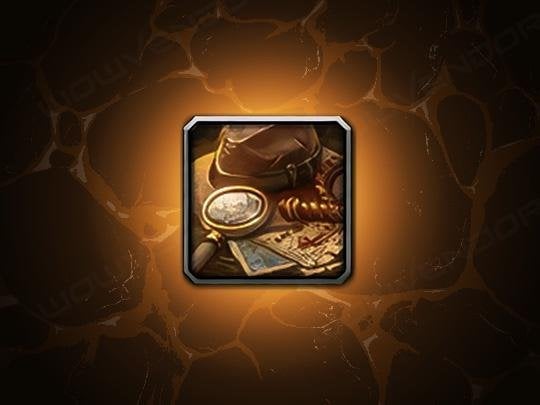
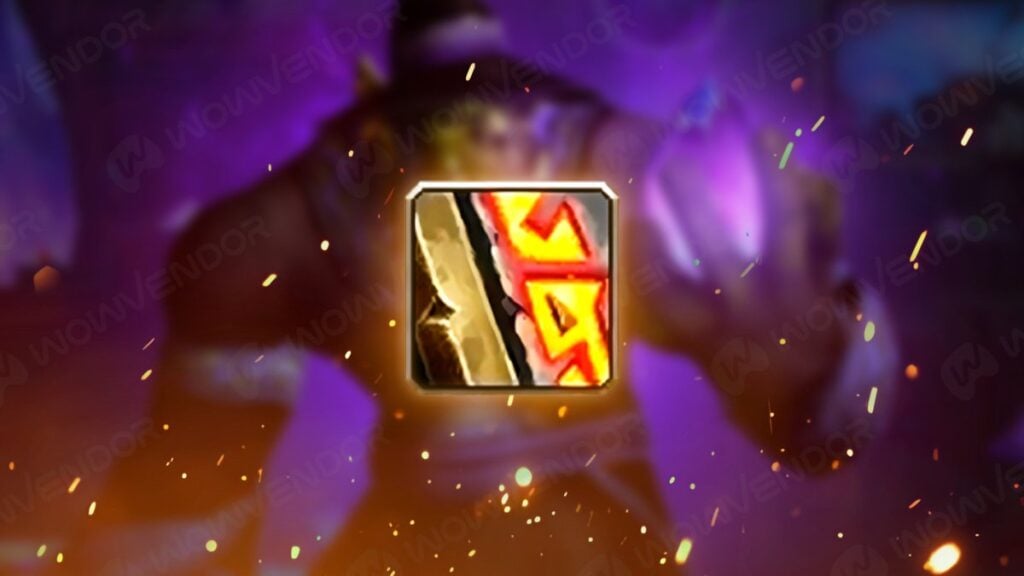

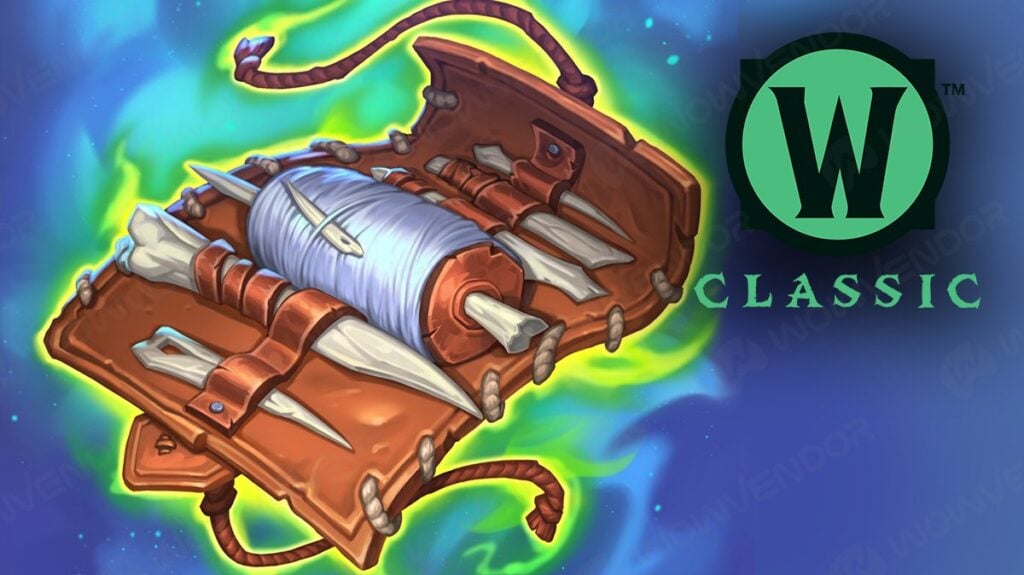
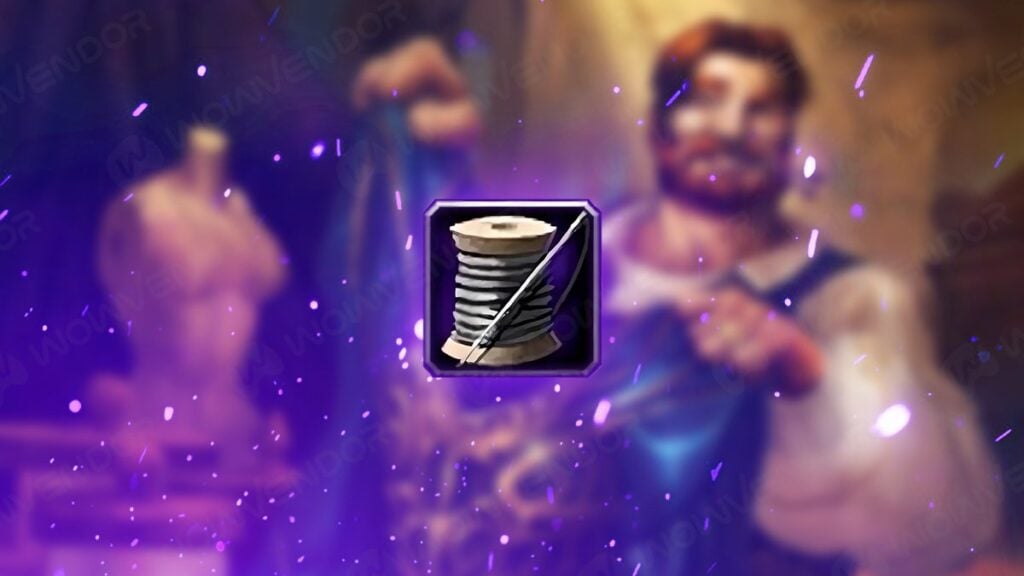

Comments